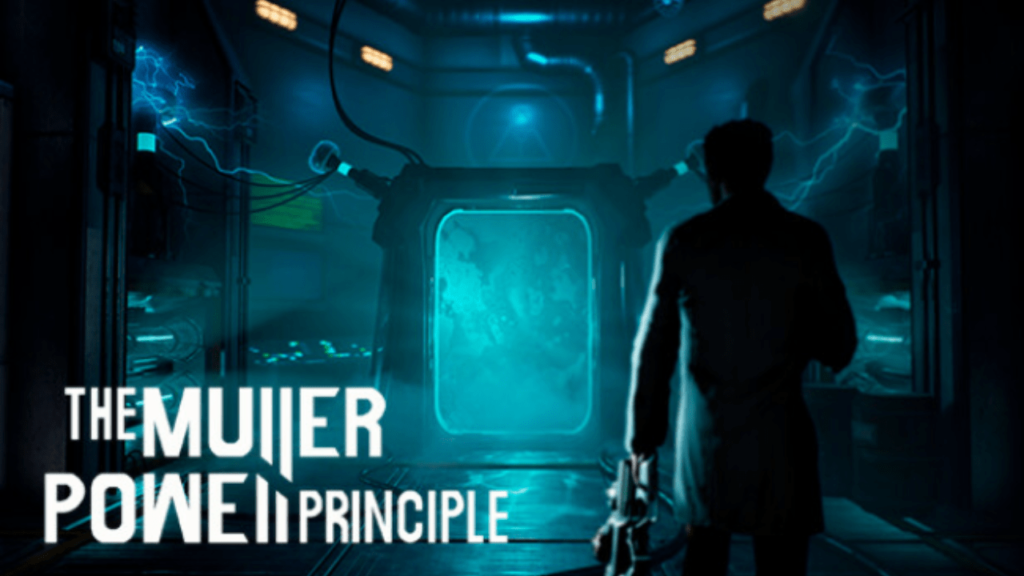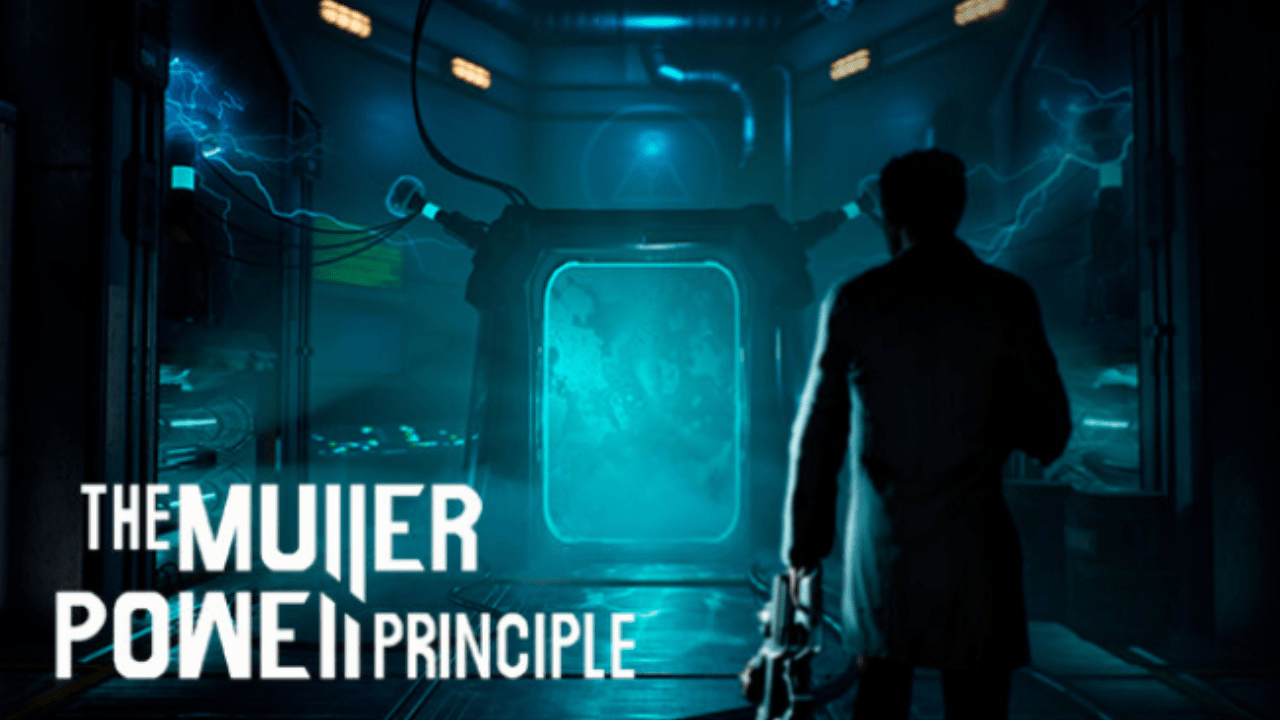THE MULLER-POWELL PRINCIPLE Free Download (v1.1.2.0)

Introduction:
It is a sci-fi story that takes place shortly. You are Harry Herman, a representative of Delta Labs who investigates interdimensional voyaging. Through the interactivity, you will tackle different physical science-based puzzles utilizing an energy-controlling weapon, traverse reality to investigate strange universes and figure out the dull truth about this undertaking and your association with it. Settle different riddles and stunt foes utilizing physical science connections and your exceptional instrument – the Convenient Energy Controller. Many articles in the game can be gotten, brought someplace, or controlled in alternate ways. Whether it’s a workstation, a case you can convey, or a basic mug on a table
Screenshots:


Key Features of The Muller-Powell Principle (v1.1.2.0)
Part 1: Core Functionalities
- Dynamic system modeling.
- Real-time data analytics.
- Adaptive learning algorithms.
- Predictive analysis for trend identification.
- Built-in simulation environment.
- Cross-platform compatibility.
- Multi-user collaboration tools.
- Cloud-based data integration.
- Support for large-scale systems.
- Streamlined API connectivity.
Part 2: Usability Features
11. User-friendly interface.
12. Interactive tutorials for beginners.
13. Modular system customization.
14. Drag-and-drop functionality.
15. Role-based access control.
16. Offline functionality.
17. Real-time error diagnostics.
18. Auto-save and recovery options.
19. Contextual help system.
20. Dashboard for key metrics.
Part 3: Performance Enhancements
21. High-speed computation engine.
22. Optimized for low latency.
23. Load balancing for large datasets.
24. GPU acceleration for intensive tasks.
25. Energy-efficient operations.
26. Scalable architecture.
27. Built-in redundancy mechanisms.
28. Support for concurrent processing.
29. Automatic updates and patches.
30. Advanced caching mechanisms.
Part 4: Integration and Compatibility
31. Seamless integration with third-party tools.
32. Support for multiple data formats (e.g., JSON, CSV).
33. Backward compatibility with previous versions.
34. Compatibility with major operating systems.
35. Integration with AI and ML frameworks.
36. Robust export/import features.
37. Support for IoT device data.
38. API for custom extensions.
39. Multi-language support.
40. Version control system compatibility.
Part 5: Security and Compliance
41. End-to-end encryption.
42. GDPR-compliant data handling.
43. Multi-factor authentication.
44. Activity logging and monitoring.
45. Secure user authentication mechanisms.
46. Regular vulnerability assessments.
47. Role-based data permissions.
48. Data integrity verification.
49. Backup and disaster recovery systems.
50. Compliance with ISO 27001 standards.
System Requirements:
Minimum System Requirements:
- Requires a 64-digit processor and working framework
- Operating system: Windows 7/8/10 (64-digit)
- Processor: Quad-center Intel or AMD, 3 GHz or quicker
- Memory: 8 GB Smash
- Illustrations: GeForce GTX 970 or AMD same
- Capacity: 15 GB accessible space
Check It Out:
The Moonstone Equation Free Download (v2019.11.13)
FAQs:
General Questions
- What is The Muller-Powell Principle?
A framework or tool designed for dynamic system modeling and decision-making support in various industries. - Who developed it?
It was developed by experts in computational modeling and data analytics. - What is the purpose of v1.1.2.0?
To enhance the usability, performance, and integration capabilities of the previous versions. - How is this version different from previous ones?
It includes advanced features like real-time collaboration, improved security protocols, and enhanced compatibility with modern systems. - What industries is it best suited for?
Industries like healthcare, finance, logistics, manufacturing, and education. - Is it open source?
No, it is a proprietary tool, but it offers some community-driven plugins and extensions. - Can individuals use it for free?
A basic version or trial might be available, but advanced features require a paid license. - How does it support decision-making?
By providing predictive analytics, trend forecasting, and real-time data insights.
Installation and Setup
- What are the system requirements?
Minimum: 8 GB RAM, 2 GHz processor, and 500 GB storage. Recommended: 16 GB RAM and SSD storage. - How do I install it on Windows?
Download the installer, run the executable file, and follow the on-screen instructions. - Is there a Linux version?
Yes, it supports major Linux distributions like Ubuntu, Fedora, and CentOS. - Can it be installed on mobile devices?
A mobile companion app is available for basic features, but the full version is desktop-only. - Does it require an internet connection?
Internet is needed for installation, updates, and cloud-based features, but offline mode is supported for some functions. - Are there any prerequisites before installation?
Ensure that the system meets hardware requirements and that dependent libraries (if any) are installed. - How do I update to v1.1.2.0?
Use the built-in updater or download the latest version from the official website.
Usage and Functionality
- How do I start using it?
Launch the program, complete the setup wizard, and access the onboarding tutorials. - What are the main components of the system?
The system includes modules for modeling, simulation, data analysis, and reporting. - Can it handle big data?
Yes, it is optimized for processing large datasets with advanced computation algorithms. - Does it support real-time collaboration?
Yes, multiple users can work on projects simultaneously via cloud integration. - How does the simulation feature work?
Users can input parameters, run simulations, and visualize outcomes using built-in tools. - Can I customize the dashboard?
Yes, the dashboard is fully customizable with drag-and-drop widgets.
Troubleshooting and Support
- What should I do if the system crashes?
Restart the application, check logs for errors, and contact support if needed. - How do I report a bug?
Use the built-in feedback tool or email the support team with detailed information. - Are there known issues in v1.1.2.0?
Check the release notes or the support portal for a list of known issues. - What support channels are available?
Support is available via email, live chat, and community forums. - Can I request a feature?
Yes, submit feature requests through the user portal or feedback tool. - How do I recover lost data?
Use the built-in recovery tool if backups are enabled, or restore from saved backups.
Security and Compliance
- How secure is The Muller-Powell Principle?
It uses state-of-the-art encryption and complies with industry security standards. - What encryption methods does it use?
AES-256 for data at rest and TLS 1.3 for data in transit. - Does it comply with GDPR?
Yes, it is fully GDPR-compliant and ensures data privacy. - How does it handle user data?
User data is encrypted, anonymized, and stored securely. - Can I audit system activities?
Yes, an activity log tracks all user actions for auditing purposes.
Final Thought:
The Muller-Powell Principle addresses a summit of long periods of exploration, development, and coordinated effort. With rendition 1.1.2.0, we planned to refine its capacities to fulfill the needs of an always advancing computerized and scientific scene. This delivery is something other than an instrument; it’s a demonstration of our obligation to engage clients with state-of-the-art innovation that works on intricacy, encourages cooperation, and drives results.





